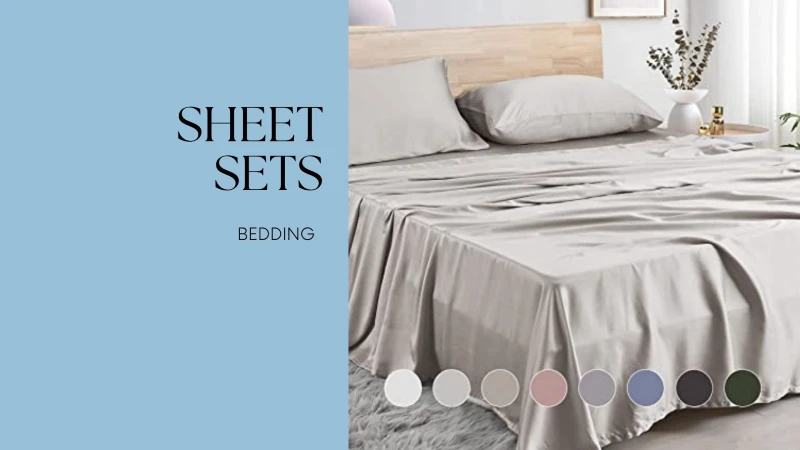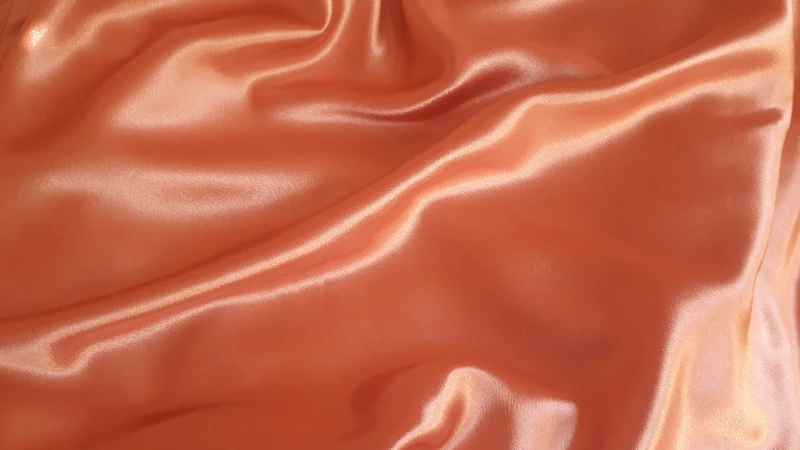Disclosure: This post may contain affiliate links, meaning we get a commission if you decide to make a purchase through our links, at no cost to you. Please read our disclosure for more info.
Unless you’re Martha Stewart, odds are you know the bare minimum about thread count. It’s not exactly a topic discussed at dinner parties.
But did you know that having a basic understanding of thread count and what your options are can greatly enhance your comfort at night?
Not all sheets are created equal. When it comes to optimizing your bed’s coziness, thread count plays a big role. Here’s a basic guide to understanding it and how it can change your world for the better.
In This Post:
What is Thread Count?
When you’re buying sheets and you see a “thread count” on the label, this simply refers to the number of vertical and horizontal lines in every square inch. Most sheets with thread counts between 200 and 800 are considered soft, and high quality.
Basically, the higher the thread count, the more threads used to create the sheet. This generally means that the sheet is softer and more durable than others with a lower thread count.
Typically, most sheets get softer as you wash and use them. Ideally, with a higher thread count, you should start off with ultra-soft sheets. Unfortunately, that high number may not always mean a softer sheet.
However, there are a few tricky things to keep in mind when shopping for sheets that will prevent you from being fooled by a high thread count on the label.
Don’t Be Fooled
Ever heard of “ply”? Well, this little word makes a big difference in whether the thread count you see on a label is actually the number of threads used to create the sheet.
Ply refers to the number of threads that are wrapped together to make one single thread. For example, you may see a sheet advertised with a 400 thread count with double-ply.
This means that sheet fabric is made of two threads twisted together to create every single thread. So those “400” threads actually equate to 200 for your true thread count.
In contrast, if that same sheet was single-ply, it would, in fact, have 400 single threads in it.
Single Versus Double-Ply
Now that you understand the difference between single and double-ply fabrics, how do you know which you’d prefer? Both types offer different things.
Single-ply fabrics will naturally be lighter and more breathable. They will be slightly more airy and delicate.
This may be great if you’re looking to cover a bed in your summer home when you’re looking for a reprieve from the heat at night.
On the other hand, double-ply is heavier and more durable. If you’re looking for warmth, double-ply works better. Especially in combination with a thicker fabric.
Importance of Fabric
Cotton, “the fabric of our lives.”
Cotton is commonly known as the most popular fabric for comfortable sheets. This is for a number of reasons. In general, cotton is known for its softness and durability. Pima cotton, in particular, can be long-lasting.
Every cotton is a breathable fabric. This means you are less likely to wake up in a sweat.
While cotton sheets sometimes feel stiff or paper-like when you first purchase them, they only improve over time. With each wash and use, they soften and become ideal for sleeping.
Egyptian cotton is absorbent and considered one of the best cottons for breathability. You can find almost any cotton material in an organic form as well. Be sure to check that the label includes the U.S. government certification.
If you’ve ever stayed in a winter cabin, you’ve probably slept in flannel sheets. Ultra-cozy on an autumn or winter night, these sheets are usually a larger-ply and hardwearing.
Of course, their warmth does mean they are generally less usable on a regular basis. That is unless you live in the arctic.
Why Weaves Matter
The weave of a sheet is how the threads are combined to create the sheet. The weave affects the feel and texture of the sheet.
Understanding the different weaves will help you select the sheet with both the look and feel you are hoping for.
Percale sheets are woven together closely. This gives them that silky, smooth texture that is often associated with luxury.
Twill weaves are what you usually see in the more durable sheets like flannel. This weave is what makes flannels sheets so soft and snuggly. Twill weaves create a raised surface, giving your sheet a downy fluffy look.
Often, you’ll see the plain-stitch knitted jersey. This sheet weave is usually found in more run-of-the-mill, (but highly comfortable), cotton sheets.
As for the sateen weave, the threads are placed on the uppermost surface of the sheet. This gives off that shiny, silky look but also doesn’t breathe as well as other weaves.
Test Before You Buy
Many retailers will allow you to feel a sheet fabric before you take the plunge. More generic sheet sets also tend to package the sheet in a bag of the same material and fabric.
This allows you to touch and decide if that particular set is right for you.
Just be sure to keep in mind what really makes you comfortable when you sleep. Thread count can make a big impact. But it’s not the only factor that affects comfort.
Choosing the Right Sheets for You
At the end of the day, choosing the best set of sheets is completely a matter of preference. A thread count is just a number. Still, there are a few helpful questions to ask yourself before buying that will help guide your choice:
- What is the temperature of my home at night?
- Do I prefer cool, breathable sheets or snug and toasty?
- Do I sleep better on silky, fuzzy, or more basic weaves like cotton-poly?
- How long do I hope to keep these sheets?
- What is my budget for bed linens?
Once you have a handle on basic sheet vocabulary, things like understanding thread count won’t be so intimidating.
For more helpful guides, hacks, and tips on creating the ideal sleep-space read our post on 5 bedding ideas that help you get a great night’s sleep. Happy sleeping!




